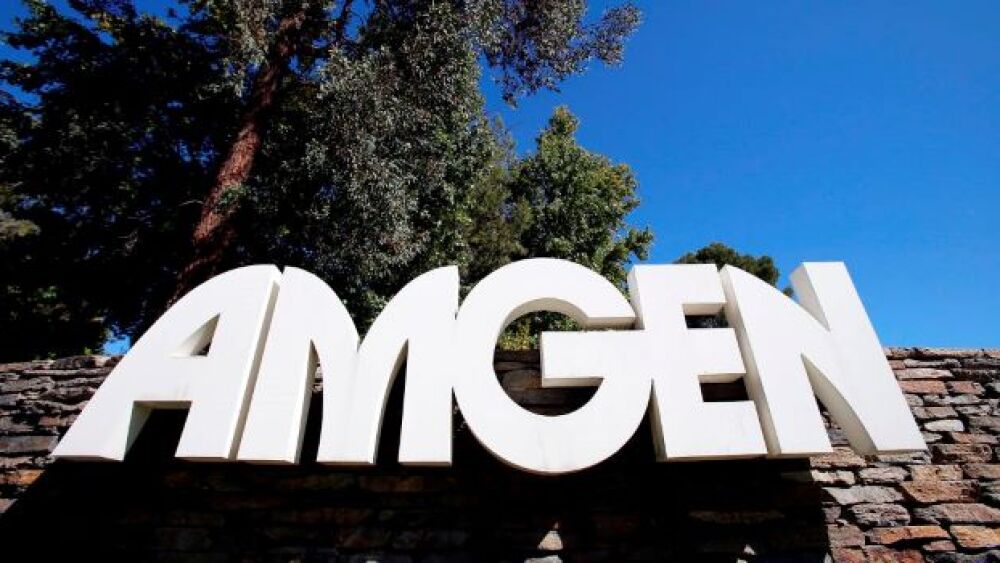Amgen presented data from its Phase III CodeBreaK 200 trial of Lumakras showing the drug improved progression-free survival and objective response rate over intravenous chemotherapy.
Amgen presented data from its Phase III CodeBreaK 200 trial of Lumakras showing the drug improved progression-free survival and objective response rate over intravenous chemotherapy, specifically docetaxel.
Lumakras (sotorasib) is a KRASG12C inhibitor. It was the first such drug to be approved by the FDA in May 2021. It was granted accelerated approval, which requires follow-up studies to verify clinical effectiveness.
In the Phase III study:
- Lumakras resulted in a significantly higher ORR than docetaxel, doubling the response rates among people who received it at 28% compared to 13% on docetaxel alone
- Demonstrated a range of benefits in secondary endpoints, including improved disease control rate (83% compared to 60%)
- Indicated a faster response time (1.4 versus 2.8 months)
However, overall survival (OS) a key secondary endpoint, was not significantly different between those receiving Lumakras and those receiving chemotherapy - 10.7 months versus 11.3 months, respectively.
Amgen presented the data at the Presidential Symposium III session at the European Society for Medical Oncology Congress 2022 held in Paris.
The trial wasn’t powered to show a statistical difference in OS. More than one-third of patients in the docetaxel cohort continued on to receive a KRASG12C inhibitor as part of a cross-over protocol or follow-up therapy, “which could diminish differences in OS benefit between the two study arms,” an Amgen spokesperson told BioSpace.
The spokesperson added, “The totality of the evidence from this study, and consistency seen across the program, supports the importance of Lumakras as a targeted treatment option for patients and reinforces the criticality of comprehensive biomarker testing for all patients with advanced non-small cell lung cancer.”
The company will submit the data to regulators globally where it is approved conditionally, such as in the U.S.
The KRAS Competition
The KRAS gene is often mutated in lung, colon and pancreatic cancers. For many years, it was viewed as “undruggable” until Amgen’s Lumakras was approved as the first drug to block KRAS.
“KRAS mutations have long been considered resistant to drug therapy, representing a true unmet need for patients with certain types of cancer,” said Richard Pazdur, M.D., director of the FDA’s Oncology Center of Excellence.
Other companies are chasing Amgen in the space.
- In June, Mirati Therapeutics reported data from the KRYSTAL-1 study of intracranial responses to its adagrasib in patients with KRASG12C-mutated NSCLC with active and untreated CNS metastases. These types of CNS metastases appear in 27 to 42% of patients with KRASG12C-mutated NSCLC at diagnosis and have a median OS of five months.
- Mirati’s drug appeared to shrink tumors in 44% of advanced NSCLC patients but also had a similar percentage, 43%, of serious side effects.
- In April, Novartis presented promising early-stage data on JDQ443, a KRASG12C inhibitor. The trial data showed the drug had anti-tumor activity, high systemic exposure at the recommended dose and a promising safety profile. JDQ443 inhibits the KRASG12C mutation, with particular promise for tumors that develop resistance to treatment.
Amgen’s data is likely to be enough to support continued FDA approval of the drug, although the benefit is not as much as company representatives hoped. Liver toxicity is a continuing concern. About one-third of patients receiving Lumakras reported serious side effects, including diarrhea and elevated liver enzymes compared to about 40% of patients in the chemotherapy cohort.





